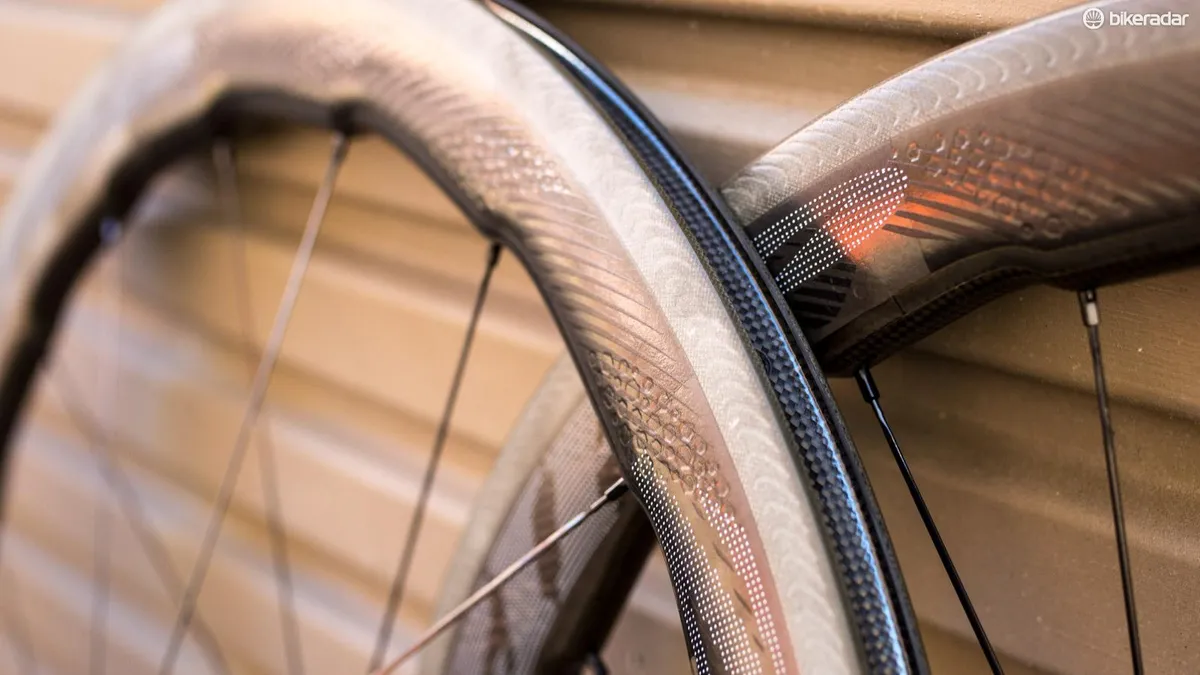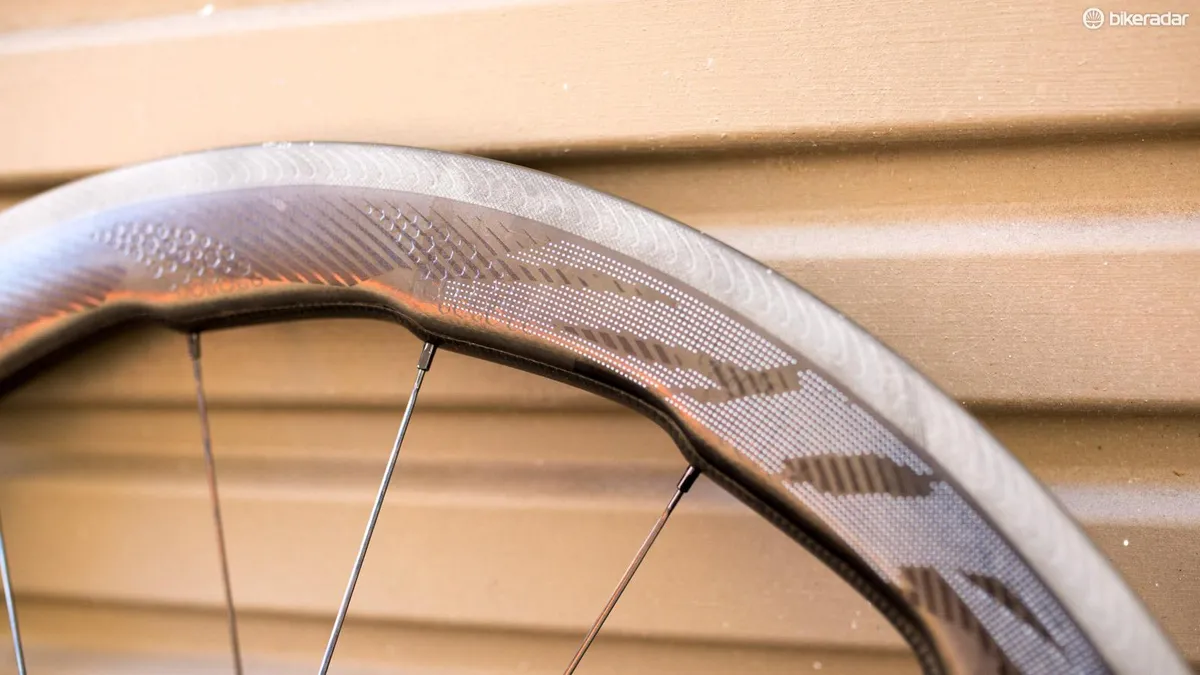Zipp recently launched its latest halo wheelset with a jagged rim profile inspired by whales — and a crosswind performance that the wheel company claims to be best in class.
There’s quite a bit going on in the latest addition to the NSW (Nest Speed Weaponry) range, but the real eye catcher is the Sawtooth rim profile. It’s like nothing we’ve ever seen in the cycling industry. With four years in development, 36 prototypes and more than 250 wind-tunnel hours, Zipp sunk some resources into this project.
Here, we take a closer look at the design.
Inspiration from nature
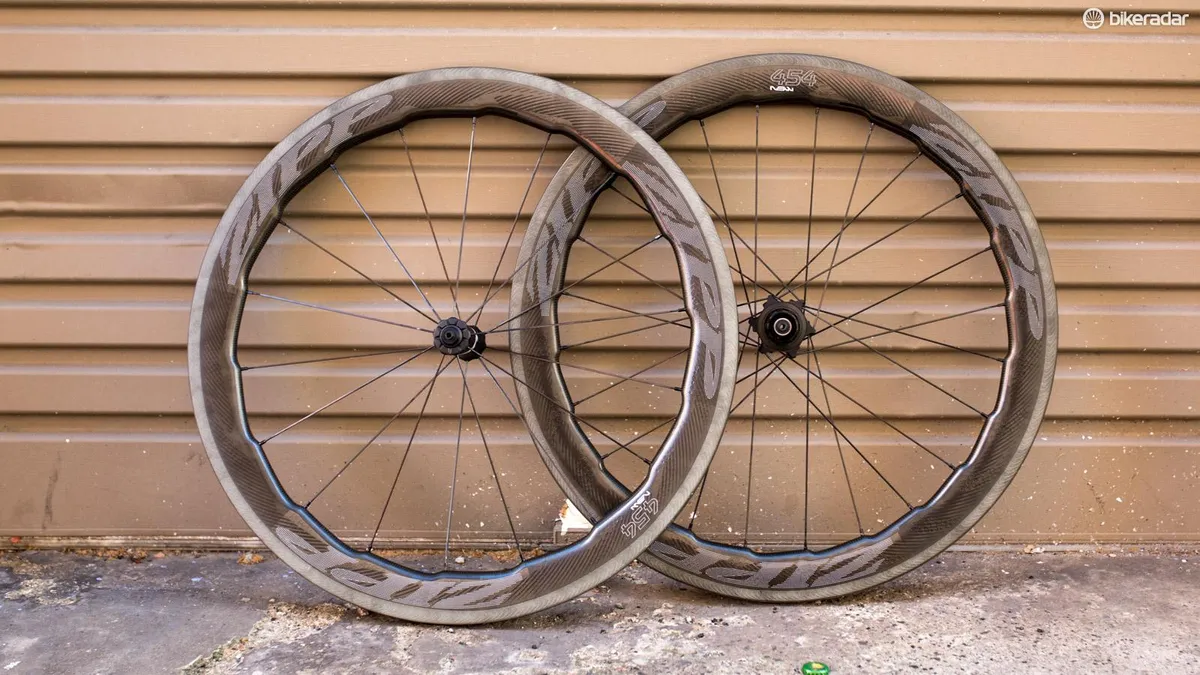
It's becoming harder and harder to make aerodynamic developments because most current gear is now well designed, and the laws of physics haven't changed.
When Zipp first launched the Firecrest shape back in 2010, the company started pushing what it calls ‘aero balance’, putting a big emphasis on stable handling as well as low drag numbers. The result was the wide, blunt shape of the Firecrest rim, which we’re now seeing mirrored throughout the industry.
When Zipp engineers went back to the drawing board to develop the next wheel, they looked not to wind tunnels but to nature.
Biomimicry means, as it sounds, mimicking nature.
“Nature solves some of the most complex problems in a particular environment, with the structures that creatures have evolved over generations help them create a competitive edge in their environment,” Zipp product manager Jason Fowler said.
It’s a field that has been used extensively in areas like the aerospace industry, Formula 1 and even swimming; just look at the effect those ‘shark skin’ speed suits had on world record times.
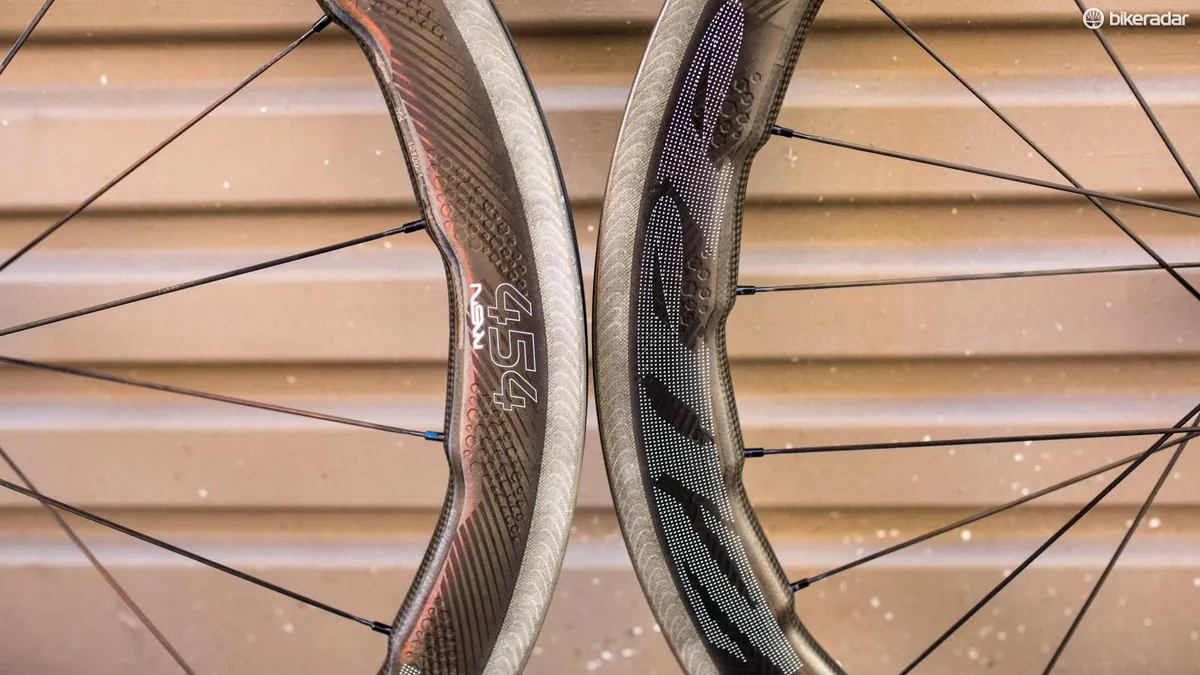
The features that Zipp honed in on for the 454 NSW wheels are the tubercles or bumps on a Humpback whale’s pectoral fins. One of the largest mammals in the world, it hums through the water at nearly 25 mph / 40kph, is about the size and weight of a city bus, yet has a turning circle of five feet — no four-wheel steering needed.
The tubercles on the leading edge of its fins allow it to be more stable and efficient in the water while hunting for krill. Zipp isn’t the first to notice these structures and similar tubercles have appeared on everything from wind turbines to airplanes.
“If you look at the rear wing on an F1 car you can see these bumps on the edge. Traditionally you’d have a gurney flap or similar like an air dam on the back of the wing to improve its performance,” Michael Hall, Zipp's director of advanced development said. “The problem with that is it's not very efficient. You get a lot of downforce but it's not efficient so they’ve been looking to biomimicry to really give it a better, more optimized design for lower drag."
It’s all about the flow
Dr. Frank Fish discovered the tubercle effect in late 2008. Effectively what these bumps do is channel water or airflow into smaller streams, which allows it to accelerate over the foil.
“So basically [the whale] has these vortex generators on its fins that allow the water flow to stay attached, making it able to make these extreme manoeuvres,” Fowler said.
These bumps create a tiny cyclone that essentially adheres the flow further along the foil, reducing drag. This is why some planes have small angled fins on the leading edge of their wings, an effect called wingtip vortices.
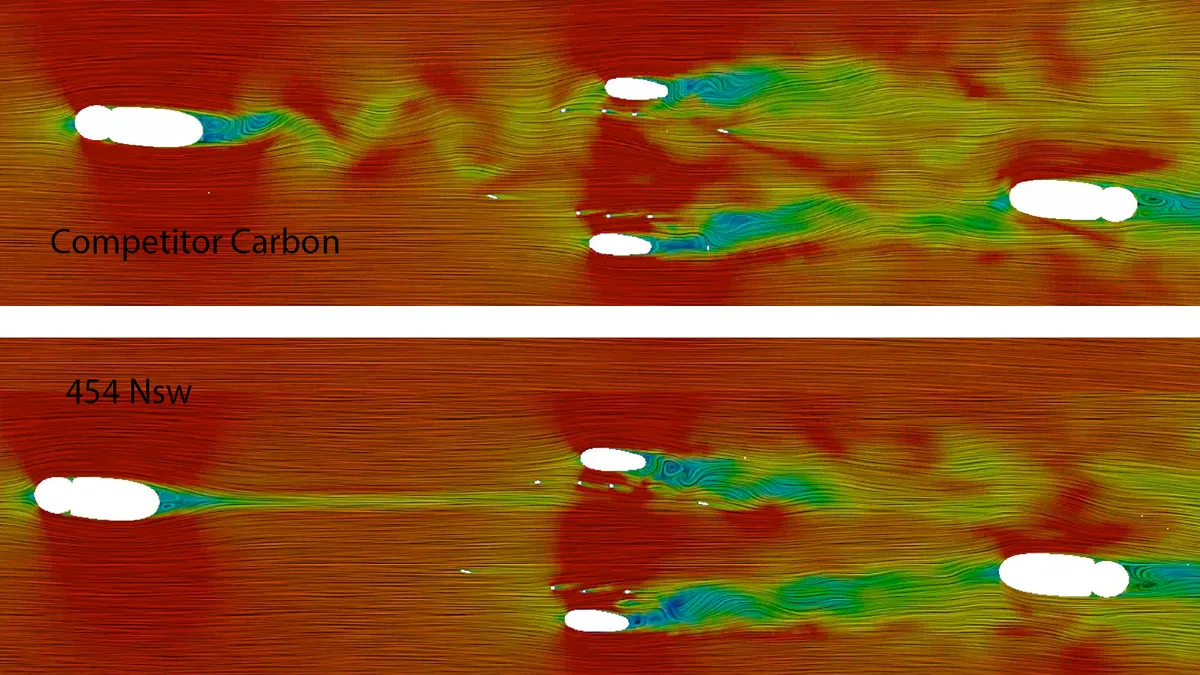
Using this, Zipp came up with the Sawtooth rim shape and calls its tubercles ‘Hydrofoils,’ which are situated on the inside edge of the rim and vary in depth from 58mm to 53mm.
“From a zero yaw angle (straight-on wind), these are unseen so the 454 NSW behaves just as a normal 404 rim would. As soon as you increase the yaw angle and you get more and more air flowing over the rim so this generates streamlined vortexes from the Hyperfoil,” said Zipp engineer Ruon Trow. “You don’t want these vortexes to be too strong. When you generate turbulence you increase drag. So the intention is to increase these vortexes as wind speed increases.”
Keeping the airflow attached to the rim is paramount and a big challenge for Zipp, as once the vortex of air is created by the Hyperfoil the wheel maker also needed to control the way it sheds off the rim. If you’ve ever ridden deep section wheels in crosswinds you’ve likely experienced frightening buffeting when you’re hit with a gust. Zipp boils this down to the way the airflow comes off the rim.
"If you look at a rim as you're riding you’ll see certain sections of the rim where the air is attached, and certain sections where its detached/separating. If you take a picture and instantaneously add up all of those attachments and detachments you come up with a Strouhal number,” said Hall.
“This number is basically a measure of vortex density, and what you want is a high Strouhal number. It’s important because that controls the vortex-shedding frequency. With high-frequency shedding you get a small shed that’s constantly happening and over time it’s a much more stable, predictable-handling wheel."
Zipp is claiming an average 15-percent reduction in sidewind feedback from a standard 60mm wheel
“What you don’t want is low-frequency shedding, as what happens is pressure builds up on the side and when it sheds you get a big dump of air which makes it very, very unstable," Hall said.
“So what’s happening with the 454 is because we are providing locations for that shedding to happen, each one of these nodes provides a place so you get this very intense frequency of shedding and an intense spike all happening around the 6.3 Strouhal number. On a normal rim you get a lower frequency but happening in more instances with more pressure being dumped in one go, making the wheel much more unpredictable,” he continues.
So what does all of this mean for you out riding in a crosswind? According to Hall, instead of that big scary steering input, instead, you’ll get more frequent but smaller and more predictable flinches through the handlebars because the nodes on the rim are allowing areas for the air pressure to gradually release rather than all in one big shudder.
A numbers game
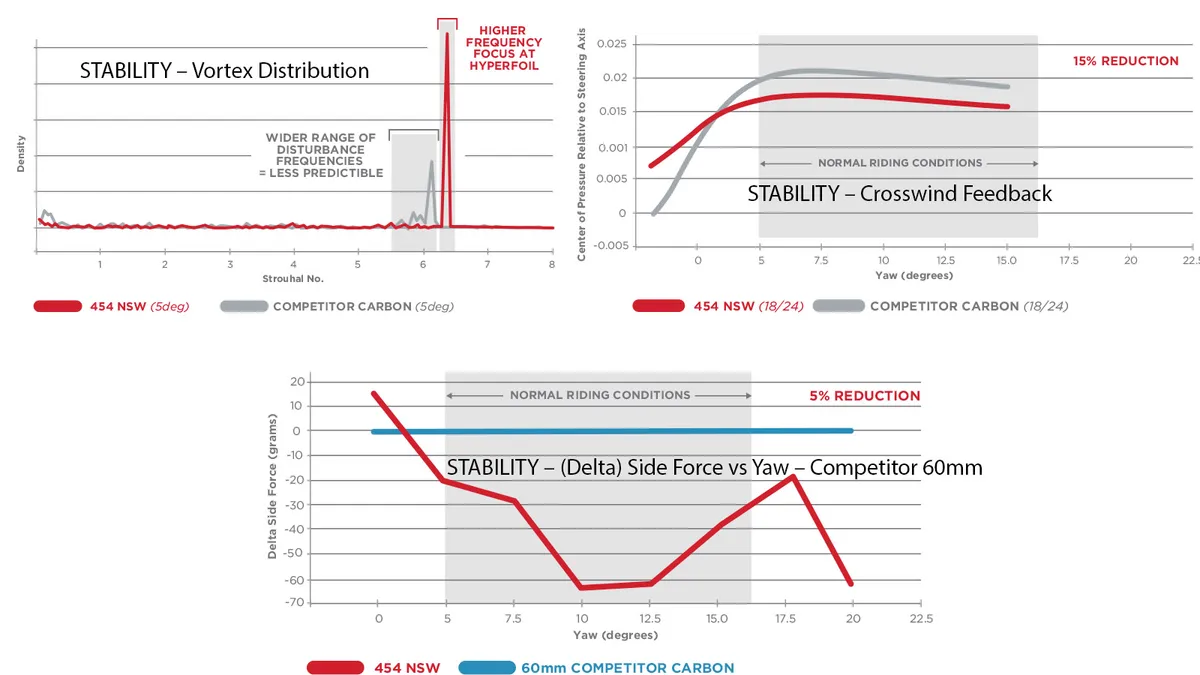
To put it into numbers, Zipp is claiming an average 15-percent reduction in sidewind feedback from a standard 60mm wheel with the same 18-front and 24-rear spoke pattern. The company also says the 454 NSW produces an average of five-percent less side force than a competitor's 60mm wheel between yaw angles of 5-15 degrees — which is what Zipp believes to be everyday riding conditions.
According to the CFD models presented by Zipp, this also cleans up airflow throughout the wheel system, meaning the back edge of the wheel, the front edge of the fork and frame.
